Scotchtown [VA]
Patrick Henry, orator of the American Revolution and first governor of Virginia, made his home at Scotchtown from 1771 to 1778.
The site offers exhibits and tours.
Patrick Henry, orator of the American Revolution and first governor of Virginia, made his home at Scotchtown from 1771 to 1778.
The site offers exhibits and tours.
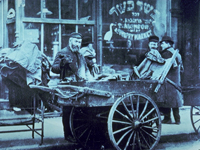
A gateway and an archive of numerous articles on New York history, this site "focuses a particularly long lens on the early history of political and economic events, panics, riots and other related matters affecting or contributing to New York City's development and growth." Its main feature is the New York state and New York City directories. (The U.S. directory is currently unavailable.) The New York state directory offers more than 700 links and more than 60 articles organized under 21 topics that include the arts, cities and counties, ethnic groups, military, societies and associations, transportation, women and their professions, and worship.
The New York City directory offers more than 5,200 links and more than 700 articles organized under 58 topics that include architecture, the arts, business matters, city government, clubs and societies, crime and punishment, education, ethnic groups, 5th Avenue, Harlem, immigration, New York City panics, real estate, temperance and prohibition, and Wall Street. The visitor can search the entire site or each directory by keyword. This site is a good starting point for researching the history of New York. It should also be useful for literary scholars, writers, and historical societies.
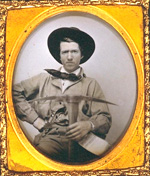
This archive provides more than 81,000 images and 1,000 texts on the history and culture of California. Images may be searched by keyword or browsed according to six categories: history, nature, people, places, society, and technology. Topics include exploration, Native Americans, gold rushes, and California events.
Three collections of texts are also available. Japanese American Relocation Digital Archive furnishes 309 documents and 67 oral histories. Free Speech Movement: Student Protest, U.C. Berkeley, 19641965 provides 541 documents, including books, letters, press releases, oral histories, photographs, and trial transcripts.
UC Berkeley Regional Oral History Office offers full-text transcripts of 139 interviews organized into 14 topics including agriculture, arts, California government, society and family life, wine industry, disability rights, Earl Warren, Jewish community leaders, medicine (including AIDS), suffragists, and UC Black alumni.
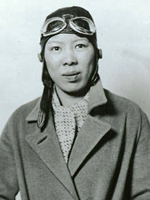
This site offers a large archive of selected documents, reports, records, maps, photographs, newspapers, artifacts, and oral history interviews. Items are searchable by ethnic group, keyword, archive, type of material, date, or subject. Brief historical overviews and bibliographies for each ethnic group profiled are also available in the archive section. Another section has lessons plans for teachers on African Americans, immigration and settlement, migration, and ethnic culture and identity, 1850-1950. It also offers tutorials on using the archive, using history databases on the web, interpreting photographs, interpreting documents, and interpreting oral history. Historical overviews are provided on the various ethnic groups that settled the Columbia River Basin.
A discussion forum offers a place to talk about discoveries in the archive or questions. Topics currently include ethnic groups, ethnicity and race, work and labor, immigration and migration, family life, religion, social conditions, discrimination, and civil rights. A very useful site for researching or teaching the social and cultural history of the Columbia River Basin.
How did segregation shape daily life for generations of African Americans and how do its legacies remain with us today?
Textbooks locate segregation’s origins in Southern disenfranchisement laws of the 1890s and highlight the Supreme Court's 1896 "separate but equal" ruling in Plessy v. Ferguson. New job opportunities during World War I and the Great Migration are briefly addressed along with "custom and tradition". Textbooks emphasize the National Association for the Advancement of Colored People's legal challenges, and portray the 1954 Brown v. Board decision as the culmination of the fight. Thus, according to the textbooks, from the 1890s to the 1950s, African Americans endured as best they could.
Primary sources provide ample evidence of segregation's brutality. They demonstrate the kind of structural inequalities that white supremacist laws and practices institutionalized but also that African Americans embraced a variety of methods to combat Jim Crow's injustices, and that white allies occasionally joined them. Collectively, the primary sources included here reveal how geography, class, gender, and culture have influenced ongoing battles for justice, as have changing national and international contexts.
Historians debate the origins of Jim Crow, but it is important to remember that slavery had mandated the use of laws and practices to govern interracial relations. Separation from whites by choice accompanied freed people's desire for independence from their former white owners even as they expected the full and equal citizenship guaranteed to them by the 14th Amendment.
Segregation contradicts what most students have learned about American freedom and democracy. Textbooks discuss de jure [in law] segregation as a great inconvenience that began in the 1890s and soon spread to every aspect of Southern daily life. Most routinely ignore:
Textbooks that portray segregation as a prelude to a more celebratory narrative of the civil rights era collapse the history of earlier generations of African Americans into a monolithic victimhood.
While the South's vicious de jure system stands apart, the rest of the nation's reliance on both informal custom and formal policy means that segregation—as well as the white supremacy and federal complicity that sustained it—cannot be dismissed as a regional aberration in an otherwise democratic nation.
Segregation contradicts what most students have learned about American freedom and democracy. Textbooks locate segregation's origins in southern disenfranchisement laws of the 1890s and highlight the Supreme Court's 1896 "separate but equal" ruling in Plessy v. Ferguson. The majority of African Americans still lived in the south and worked as agricultural laborers for white landowners who denied them an education and exploited them economically. New job opportunities during World War I offered one escape.
Was economic difference—manufacturing in the North and slave-driven agriculture in the South—the primary cause of the Civil War?
Textbooks have traditionally taught that incompatibility between northern and southern economies caused the Civil War. Everything else was tied to that economic difference, anchored by cotton.
Census data from 1860 shows farms, manufacturing, and cities in the North and the South, as well as the location of slaves and cotton in southern states, all of which challenge the notion of a purely agricultural South and industrialized North.
The Civil War was fought for many reasons, not solely or even primarily because of the growing importance of cotton on southern farms. Moving away from economic differences and cotton as simplistic causes leads to a more accurate, and far more interesting, understanding of the causes of the Civil War.
For years, textbook authors have contended that economic difference between North and South was the primary cause of the Civil War. The northern economy relied on manufacturing and the agricultural southern economy depended on the production of cotton. The desire of southerners for unpaid workers to pick the valuable cotton strengthened their need for slavery. The industrial revolution in the North did not require slave labor and so people there opposed it. The clash brought on the war.
Economic divergence is certainly one of the reasons for the Civil War, but neither the major one nor the only one. Many factors brought about the war. Focusing only on different economies would be like arguing that one professional football team will always win because it has taller players.
The true causes of the Civil War are downright intriguing and just as complex as the conflict itself.
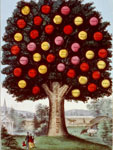
What caused the temperance movement in the U.S.?
The causes of the temperance movement in the United States can be understood as emerging from religious, social, and economic circumstances. Distinct from 20th-century prohibitionists who supported total abstinence through public policy, supporters of the 19th-century temperance movement sought disciplined drinking, and found an early advocate in Dr. Benjamin Rush’s 1784 essay The Effects of Spirituous Liquors. In words intended to influence individual behavior, Rush argued that alcohol, when overused, was unhealthy. A few years later, this message was expanded into one of the reasons for the formation of an organization in Andover, MA, which intended to improve society through pledges of abstinence. By 1826, the American Temperance Society, a federation of over 8,000 temperance societies in towns and cities across the United States, claimed a million and a half members.
These enthusiasts were attracted to a message they heard from the pulpit: too much alcohol was a sin against God. The famous Congregational, later Presbyterian pastor Lyman Beecher was one of the most famous evangelical preachers who delivered this message when he urged all ministers to discuss the problem with their congregations, making clear that parents must stop drinking at home and employers must stop offering their employees grog. Imbued with the understanding that all Christians must strive for perfection, church members became willing participants in organized temperance societies. The Second Great Awakening, the crusade that began in the 1790s and continued into the early 19th century, further emphasized the responsibility of every believer for their own soul.
One of the other catalysts for the temperance movement was the increased availability of spirits for a generation of Americans whose water supplies were often contaminated. During the 1820s, the decade when the American Temperance Society was organized, the per capita levels of American drinking were at an all-time high. All forms of liquor, whether whiskey distilled from the surpluses of grain or the ubiquitous and powerful cider fermented from apples, were easily purchased in grocery stores or enjoyed in the all-male taverns that became the clubs of workmen.
For supporters of the temperance movement, public drunkenness became a distressing sign of how far the United States had strayed from its roots among those prudent hardworking founders. As the United States industrialized, employers sought sober disciplined workers who came to work on time. At the same time, women had special reasons to create their own temperance societies. Shunned in male associations, they confronted drunkenness in their homes. The great leader of the Women’s Christian Temperance Union, Frances Willard, had an alcoholic brother and she was only one of many women who found salvation in a movement that sought to control a problem with both public and private ramifications.
Rush, Benjamin. "An Inquiry into the Effects of Spirituous Liquors on the Human Body : To Which is Added, a Moral and Physical Thermometer." Boston: Thomas and Andrews, 1790.
Brown University Library Center for Digital Scholarship. Alcohol, Temperance, & Prohibition.
Gusfield, Joseph. Symbolic Crusade: Status Politics and The American Temperance Movement. Urbana: University of Illinois Press, 1963.
Rorabaugh, W. J. The Alcoholic Republic: An American Tradition. New York: Oxford University Press, 1979.
Borden, Ruth. Women and Temperance The Quest for Power and Liberty. Philadelphia: Temple University Press, 1981.

These published works, manuscripts, images, and motion picture footage address the formation of the movement to conserve and protect America's natural heritage. Materials include 62 books and pamphlets, 140 Federal statutes and Congressional resolutions, 34 additional legislative documents, and excerpts from the Congressional Globe and the Congressional Record. An additional 360 presidential proclamations, 170 prints and photographs, two historic manuscripts, and two motion pictures are available.
Materials include Alfred Bierstadt paintings, period travel literature, a photographic record of Yosemite, and Congressional acts regarding conservation and the establishment of national parks. An annotated chronology discusses events in the development of the conservation movement with links to pertinent documents and images.
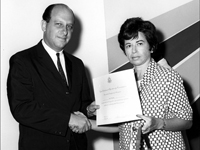
This exhibit explores the contributions of Jewish women in Feminism's "Second Wave" during which Jewish women helped work "to transform American society and Jewish life in America." It offers a collection of images, a timeline, and six thematic essays. The interactive timeline using the exhibit images allows the visitor to follow the role of Jewish women in the resurgence of the feminist movement from the 1960s through the end of the 20th century. The thematic essays—"Foremothers," "From Silence to Voice," "Setting the Feminist Agenda," "The Personal is Political," "Feminism is Judaism," and "Confronting Power"—combine images, audio clips, and statements from prominent Jewish feminists, as well as short biographies of the feminists. The visitor can search the entire collection of more than 90 objects and stories from Jewish feminists used in the essays or browse the collection by person, format, topic, or date. A useful resource for researching Jewish women or the history of the feminist movement.
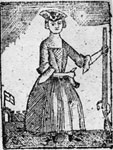
Prepared by Catherine Lavender, Professor of History at the College of Staten Island, this site teaches students about 19th-century women's use of "liberty rhetoric,"—the way of speaking about the relationship between the citizen and the state—to argue for their own liberties. The site focuses on three topics. The first section offers seven documents, two poems, and three images depicting origins of liberty rhetoric in the Revolutionary tradition. The second section provides nine documents and five images tracing the operations of the textile mills in Lowell, Massachusetts, and the liberty rhetoric that the female mill workers used during their strikes in 1834 and 1836.
This section also offers a Lowell Girl Pictorial Gallery with ten images of Lowell and the working lives of the young women who flocked to the mill town to experience some measure of autonomy and to earn money in the mills. The third section provides the text of the 1848 Declaration of Sentiments and compares it to the Declaration of Independence as an expression of liberty rhetoric.
Also provides five links to other sites, including the Library of Congress National American Women's Suffrage Association Collection and the Rochester University Susan B. Anthony Center's History of the Suffrage Movement. This site is easily navigable and provides high-quality primary document case studies on these three events in women's history.